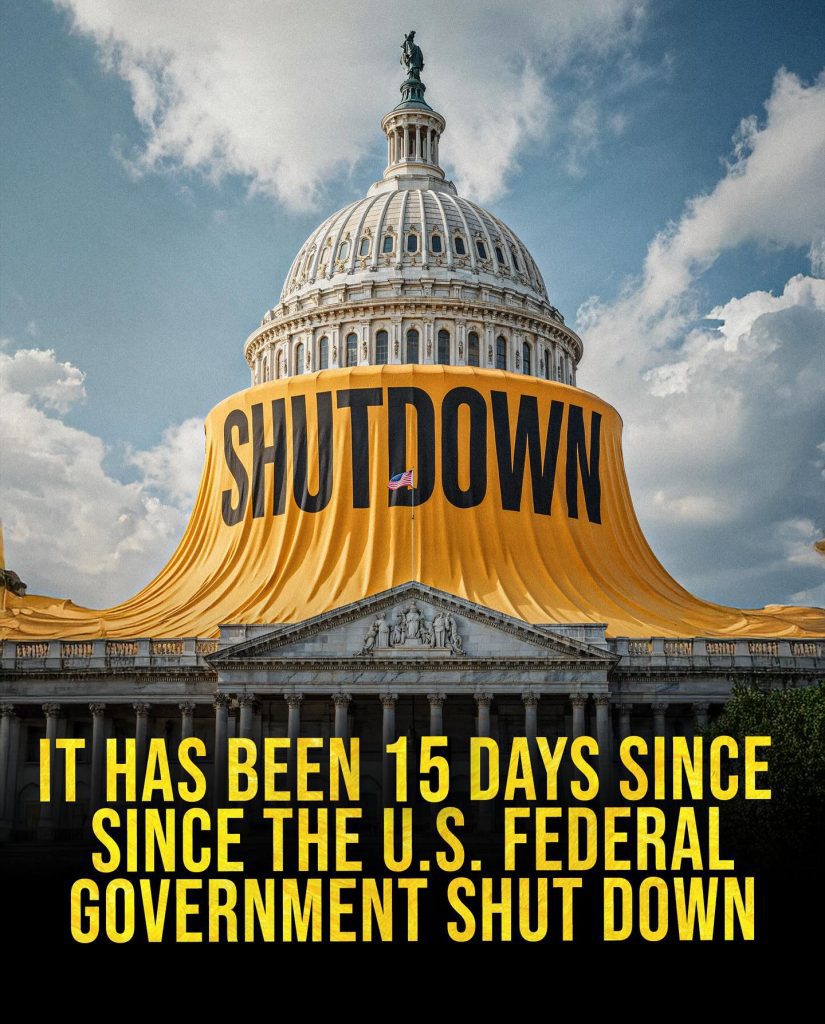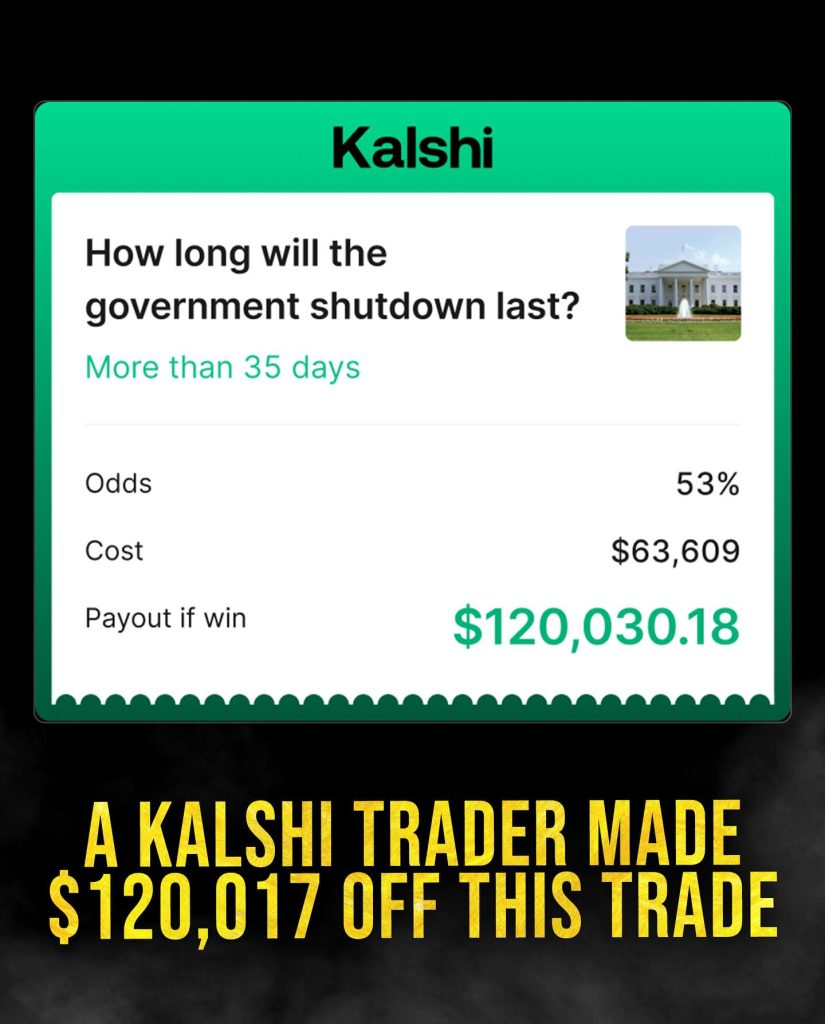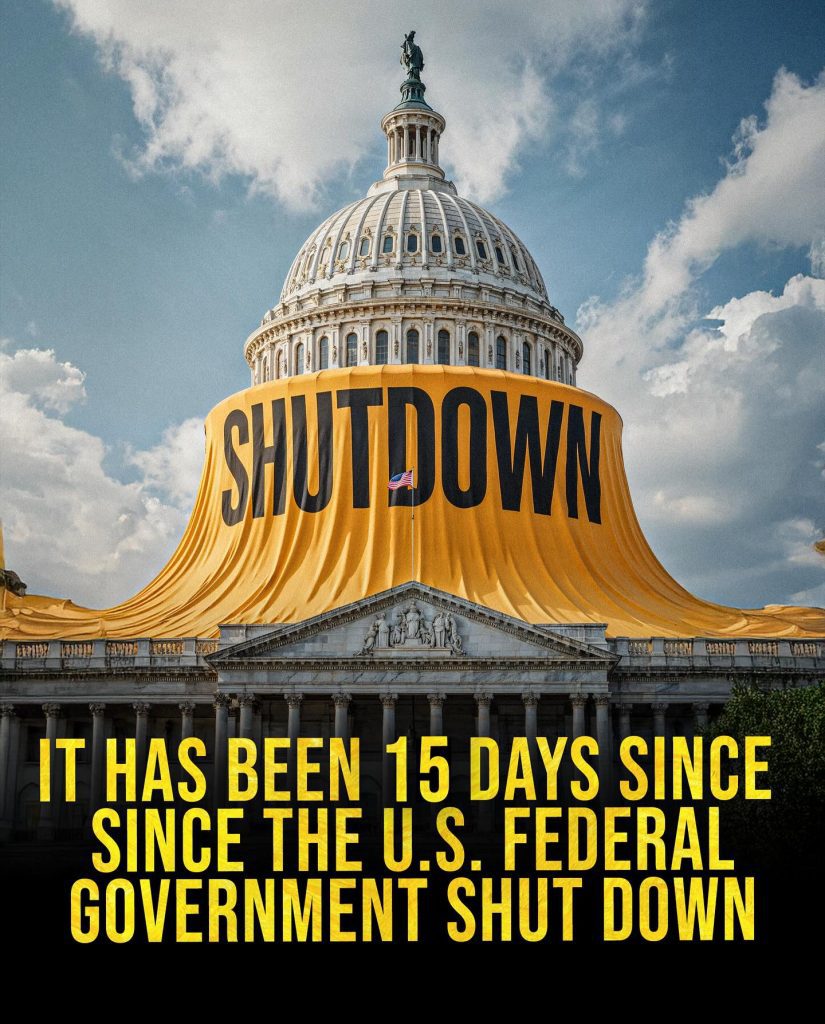Fifteen Days In — The U.S. Federal Shutdown Shows No Signs of Ending as Kalshi Markets Predict It Could Break the 35-Day Record
The U.S. shutdown is on a record pace ⏳
Fifteen days into a federal government shutdown, the United States finds itself standing on the edge of history once again. What began as another tense political standoff has turned into a test of endurance — for government workers, for families, and for the faith people still have in Washington’s ability to function. Essential services are strained, federal offices sit quiet, and hundreds of thousands of employees have been sent home with no clear return date.
The shutdown has become a reflection of a country divided between principle and paralysis. Each passing day brings the nation closer to breaking its own record for political deadlock — and for many Americans, patience is wearing thin.
We’re 15 days into a federal shutdown with routine services curtailed and many workers furloughed

Every morning now begins with uncertainty for more than 800,000 federal workers who have been told to stay home, wait, and hope. From national park rangers and food inspectors to scientists and clerical staff, entire departments are on pause. Airports are understaffed, research projects are frozen midstream, and small towns that rely on federal jobs are feeling the hit.
The shutdown may be a Washington story on the surface, but its reach extends across the country. In cities like Denver, Atlanta, and Dallas, federal employees are organizing food drives for colleagues. Banks are offering temporary relief loans, and restaurants in D.C. have opened “furlough menus” to help feed government workers for free.
Many prediction markets like @Kalshi point to the possibility of a shutdown record

The conversation has now shifted from “when will it end” to “how long can it last.” Prediction platform Kalshi, which tracks real-world events, has become an unexpected barometer of national frustration. According to the market, traders currently price a 59% chance that the shutdown will extend beyond 30 days — a number that’s climbing steadily.
To outsiders, Kalshi might seem like just another data point, but for those who trade on it, it’s a window into collective sentiment. It captures not just probability but mood — a reflection of how many believe Washington has lost its ability to compromise. Every failed Senate vote, every canceled House session, pushes that percentage higher.
Talks are stalled, the House isn’t in session, and repeated Senate votes have failed

The silence in the Capitol is almost louder than debate. Negotiations have stopped, tempers have cooled into indifference, and lawmakers have returned home while millions of Americans wait for answers. The House remains out of session, and the Senate has failed repeatedly to pass even a temporary funding measure.
Both sides continue to blame one another, but the result is the same — no progress, no paycheck, no plan. For the hundreds of thousands depending on government pay, that deadlock isn’t politics; it’s survival. Bills pile up, rent deadlines loom, and families are forced to choose between hope and exhaustion.
Kalshi’s market currently prices the chance it lasts more than 30 days at about 59%

The numbers tell a sobering story. A 59% probability might not sound huge in theory, but in the world of political prediction markets, it’s massive. It signals a collective belief that Washington won’t act anytime soon. Kalshi’s data shows traders leaning toward a scenario where this shutdown lasts into mid-November — which would put it on track to challenge the 35-day record set in 2018–2019.
The deeper meaning behind the number is trust — or rather, the lack of it. Trust that the government can compromise, trust that elected leaders understand the human cost of their gridlock, and trust that lessons from past shutdowns meant anything at all.
The modern record is 35 days in 2018–2019, the longest in U.S. history

That record, set during the Trump administration, cost the U.S. economy over $11 billion in lost productivity, delayed paychecks, and stalled business activity. Economists now warn that this current shutdown could easily surpass that figure if it continues for another month. Each passing day isn’t just a countdown — it’s an accumulating cost.
This shutdown feels heavier, more uncertain, and more detached from public urgency. In 2018, there was anger; in 2025, there’s exhaustion. Americans are no longer surprised by government dysfunction — and that, perhaps, is the most dangerous part.
As the shutdown drags on, the human stories behind the headlines multiply. Parents skipping meals so their children can eat. Young employees taking gig work to pay rent. Retirees wondering if their Social Security paperwork will be delayed. Every one of those moments is a quiet reminder of how the abstract idea of “government” touches everyday life.
Kalshi’s traders may be betting on days, but millions of Americans are counting in paychecks missed, opportunities lost, and patience tested.
The record is 35 days — but if the numbers, markets, and mood are any indication, that line may soon be crossed. What happens next will determine not just when the government reopens, but how much faith remains in a system that keeps shutting itself down.

